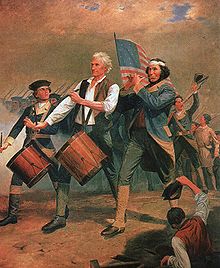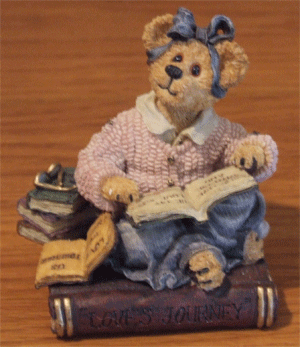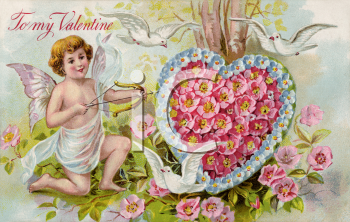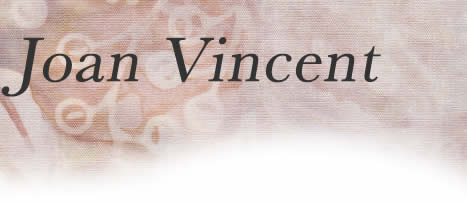
Let Have a Coze
What is a "coze?" It's Regency-speak for a "comfortable chat." A chat requires more than one person so I hope to hear from you some of you who visit this page.
December 2010

Mistletoe, a parasitic evergreen with white berries, grows on deciduous trees, never on evergreens. In England the usual type is Eurasian Viscum album. It grows most often and abundantly on apple trees, poplars, willows, and hawthorns. Most sources I have read say it rarely grows on oaks.
The fact that mistletoe is evergreen probably first drew it to the Druids’ and Celts’ attention. They highly valued any found on oaks and had a ceremony for cutting it. Some suggest they used a gold knife in the ceremony. It was used to work against diseases and even sterility and poison.
In the eighteenth century it was used in to decorate and in kissing boughs. Several myths sprang up around it’s use. One was that a lady standing beneath mistletoe could not refuse to be kissed. If she did refuse she would not marry in the coming year. In some parts of England mistletoe was burned on Twelfth Night. If it wasn’t, it was said that those who kissed beneath it would never wed.
Wishing all of you a kiss or two, happy reading, and a very Happy Christmas! JV
November 2010
 A British November holiday is Guy Fawkes or Bon Fire Night
A British November holiday is Guy Fawkes or Bon Fire Night
Gunpowder, treason and plot.
I see no reason, why gunpowder treason
Should ever be forgot.
Guy Fawkes, guy, t'was his intent
To blow up king and parliament.
Three score barrels were laid below
To prove old England's overthrow.
By God's mercy he was catch'd
With a darkened lantern and burning match.
So, holler boys, holler boys, Let the bells ring.
Holler boys, holler boys, God save the king.
And what shall we do with him?
Burn him! "
This is one of the rhymes chanted on Bon Fire Night which commemorates the night that an attempt of the life of King James I was foiled and his life saved. Guy Fawkes was one of a number of Roman Catholics who believed that when James came to power he would repeal laws that prevented Catholics from practicing their religion openly and repeal the law requiring them to attend Protestant services on Sunday. When James didn’t do this and also added new laws against Catholics they came up with the “Gunpowder Plot.” They attempted to blow up Parliament on the night the king opened the session. After placing gunpowder kegs in the basement under Parliament Guy was chosen to light the fuse.
Every November 5th Britain celebrates Guy Fawkes by creating an effigy of him (called a “guy”) and burning it as well as setting afire huge bonfires just as James 1 originally ordered. They use the bonfires to roast potatoes and heat soup. There is a traditional cake Guy Fawkes cake called Parkin made of oatmeal, treacle, and ginger. Sometimes villages and cities hold torch lit processions which lead to the bonfire and firework displays.
Not our American Thanksgiving but a thanksgiving nonetheless. JV
October 2010
From the 1669 Book of Common Prayer still in use in Regency times:“Then shall they loose their hands; and the Woman, with her right hand taking the Man by his right hand, shall likewise say after the Minister, I N. take thee N. to my wedded husband, to have and to hold from this day forward, for better for worse, for richer for poorer, in sickness and in health, to love, cherish, and to obey, till death us do part, according to God's holy ordinance; and thereto I give thee my troth. Then shall they again loose their hands; and the Man shall give unto the Woman a Ring, laying the same upon the book with the accustomed duty to the Priest and Clerk. And the Priest, taking the Ring, shall deliver it unto the Man, to put it upon the fourth finger of the Woman's left hand. And the Man holding the Ring there, and taught by the Priest, shall say, WITH this ring I thee wed, with my body I thee worship, and with all my worldly goods I thee endow: In the Name of the Father, and of the Son, and of the Holy Ghost. Amen.”
By the Hardwicke Act of 1753, all weddings in England, except the royals, could be performed only after publication of banns or getting a license, only between the morning hours of eight to twelve, only in an Anglican Church or chapel, and only before an Anglican clergyman. Two or more witnesses were required and a register must be kept. Parents must consent unless the banns were published.
 This past weekend my son got married and none of these were required. How weddings have changed since the Regency. Many things have changed since the early nineteenth century. Many of our current customs came into existence during Victorian times. One of those is the bride processing down the aisle as my son’s gorgeous bride did Friday night. In Regency times the most “processing” a bride would have done was to enter from a side room and walk a few feet to the altar. Neither was there music during the wedding service in Regency times. Nor was there a kiss at the altar after the vows were said.
This past weekend my son got married and none of these were required. How weddings have changed since the Regency. Many things have changed since the early nineteenth century. Many of our current customs came into existence during Victorian times. One of those is the bride processing down the aisle as my son’s gorgeous bride did Friday night. In Regency times the most “processing” a bride would have done was to enter from a side room and walk a few feet to the altar. Neither was there music during the wedding service in Regency times. Nor was there a kiss at the altar after the vows were said.
As is still common Banns (an announcement of the intent to marry) had to be read in Church for three Sundays before the wedding. One way to evade banns was to get a bishop’s license which enabled a couple to wed after 7 days but they still had to wed in the parish church between 8 AM and Noon. The only way around this was to obtain a Special License from the archbishop of Canterbury. These were costly and used by the aristocracy and well-to-do. Having one enable a couple to skip the banns and to wed at any time and place they wished.
Research has also told me that “Something old, something new, something borrowed, something blue, and a silver sixpence in your shoe” is a Victorian custom. This didn’t lessen the emotion when my mother gave my son’s bride a handkerchief on which she had appliquéd roses many, many years ago as “Something old.”
Borrowing from a medieval wedding toast, I raise my glass and offer a charming old English wedding toast to those from newly wed to those with many years of marriage: "I wish thee health, I wish thee wealth; I wish thee gold in store, I wish thee heaven upon earth. What could I wish thee more?” JV
September 2010
Early morning fog crisp on the pines, yes Colorado was wonderfully cool! But it was heartbreaking in another way. After we turned into the San Juan National Forest entrance outside of Creede, CO we soon entered the long narrow valley leading to Thirty Mile Campground. The sight of a multitude of the dead pine trees at first startled and then deeply saddened us.
It isn’t an absolute 100% kill—yet. By next year the pine bark bettle will have gotten all the pines. The forest rangers in camp said that it will be over 200 years before the pines return to the degree they existed before the infestation began. We have been loosing pines here in the midwest (three more of our thirty feet tall Austrian pines will have to be removed this fall) but I had no idea the disease was decimating entire forests. Those gray trees in Colorado brought home the ever changing  nature of our world in a way nothing ever has. We’ve camped at Thirty Mile for over thirty-three years. The pines in the campground are still green but the devastation is only a couple of football field lengths away so it’s only a matter of time before they too join the army of silent grey spectres amid the poplars and aspen. Such a huge change in the landscape.
nature of our world in a way nothing ever has. We’ve camped at Thirty Mile for over thirty-three years. The pines in the campground are still green but the devastation is only a couple of football field lengths away so it’s only a matter of time before they too join the army of silent grey spectres amid the poplars and aspen. Such a huge change in the landscape.
I write of a world two hundred odd years in the past. What did England look like then? France? Spain and Portugal? Fortunately the Industrial Revolution was just beginning to gear up--things were changing but not yet at a break neck pace. There were no cameras but there were artists, diarists, letter writers galore, and cartographers. With today’s technology you can get an amazingly clear idea of London and Paris from period maps or of any other historical map that has been scanned and made explorable like in this link: 1792 Horwood map of London I have an 1806 pocket (read walking) map of London that my sister scanned in sections and turned into an easily explorable set of files. Nothing like a walk on the London streets with researched details of daily life in that period to make it noisy and smelly and real.
Daily life details are ferreted out in many ways --usually books. A few of the latest additions to the Joan Vincent Collections are: The Companion Guide to the Coast of South-East-England, by John Seymour, A Degree of Prudery, A Biography of Fanny Burney by Emily Hahn, Beaufort of the Admiralty The Life of Sir Francis Beaufort 1774-1857 by Alfred Friendly, The Thurtell-Hunt Murder Case, Dark Mirror of Regency England by Albert Borowitz, and Fossil Hunter, The Dinosaurs, Evolutioin, and the Woman Whose Discoveries Changed the World (Mary Anning) by Shelley Emling
I highly recommend the Fossil Hunter for learning about what women could and did accomplish during a restrictive time in history. JV
August 2010
It’s as hot as Hades these dog days of summer. Temps are forecast to run at 100+ for the foreseeable future. Therefore I am packing a box full of TBR books and heading for the cool of Colorado. More specifically to the headwaters of the Rio Grand in the San Juan National Forest. I’ve been camping there for over thirty years. At first it was with small children and a tent, then a pop up camper with almost grown children. I’m back to a tent but now with grandchildren.
Cooking in the rain gives me a sense of the campfires in the Peninsula when the rainy season came and inundated everything. Luckily I don’t have the danger of the fevers that killed so many British soldiers in their winter camps along the rivers in Portugal. More were lost from disease and infections than from battles. The same was still true at the time of the Crimean War. I just finished rereading The Face of a Stranger by Anne Perry which drives that home and proves to be a point in a very good mystery.
 Housing in the Peninsula was very unpredictable. The officers were usually billeted in private homes but occasionally they took over palaces or castles. Barns and stables were confiscated for the troops where possible. However much of the time, on the march and in winter quarters the troops and sometimes the officers had to scavenge material for makeshift huts. Conditions varied widely throughout the war. The simplest tents were made from two blankets, supported by muskets, a ramrod, and fixed to the ground with bayonets. In the right terrain makeshift huts were made using branches covered with ferns , straw or blankets. Tents used frequently by officers, were not issued to the men until 1813. The British Bell tent depicted here was mentioned in letters as early as 1794 but not in use in the British Army until around 1810. (Bell tent information from primitivepanthers.com)
Housing in the Peninsula was very unpredictable. The officers were usually billeted in private homes but occasionally they took over palaces or castles. Barns and stables were confiscated for the troops where possible. However much of the time, on the march and in winter quarters the troops and sometimes the officers had to scavenge material for makeshift huts. Conditions varied widely throughout the war. The simplest tents were made from two blankets, supported by muskets, a ramrod, and fixed to the ground with bayonets. In the right terrain makeshift huts were made using branches covered with ferns , straw or blankets. Tents used frequently by officers, were not issued to the men until 1813. The British Bell tent depicted here was mentioned in letters as early as 1794 but not in use in the British Army until around 1810. (Bell tent information from primitivepanthers.com)
From Douglas’s Tale of the Peninsula and Waterloo: Nov. 1810 At length we reached our ground and encamped under the grand battery above the town of Soberal, where we lay for the greatest part of the winter, pretty regularly rationed but firing most miserably scarce, so much that it was rare to bring the meat to a boil. We used to eat it as thin as possible, and if you good bring the water to a good heat so as to take the red colour out of it all was right. But this kind of steam soup without salt was in my opinion, not very nourishing and indeed many men got fluxed by it. . . . Those regiments who had come from Walcheren were ordered tents which were acceptable but for the fact of being so small and so crowded. I have seen our hair frozen to the ground in the morning.
From The Diary of a Cavalry Officer by Tomkinson: Oct. 1810 The whole was withdrawn at night to Carrigada which was occupied by Sir Stapleton and Hussa4rs with two squadrons on duty in front. The 16th (Dragoons) went about a mile to its read and encamped in an olive grove up to the horses’ knees in mud; it raining incessantly the whole night, most of the officers got into a wine vault.
One of the men of the Royals, in getting some wine out of the vat fell in. The grapes were just pressed and left in that state. In this state the men drank it. The dragoon got into it in the night, was half-smothered, and caused great confusion. He, or some other, stole a ham from Colonel Archer, which when the colonel perceived, he made a great row; and what with the loss of the ham, and dragoon in the vat, we had not a very tranquil night.
Camping in the mountains will not be as difficult or adventuresome. After all we have learned what to take to ensure our comfort. To quote Lt. Tomkinson upon his arrival in Portugal: We marched on the 9th to the bank of the Vouga (River) where, for the first time we turned into a field to bivouac for the night. This was an event much thought of, and every officer was employed in bringing into use the various inventions recommended in England for such occasions, many of which were found useless; and again, many essentials had been left behind, from a determination to face the campaign with the fewest number of comforts, whereby many requisites were omitted which were not found indispensable. But we were young soldiers, had listened to every suggestion and can only learn by experience.
Tomkinson was right then and still is. Attitude makes or breaks the camping experience. Sending cool thoughts to you all. JV
July 2010
 Happy 4th of July to all fellow Americans! The celebration of our Declaration of independence from England may bring up images of tea parties (the throwing of tea into Boston Harbor) or fireworks. My father loved fireworks and the 4th of July was always a huge barbeque with literally tons of family and friends. Of course besides all the food, including home-made ice cream, we had fireworks. Enough to make the auto on yard light go off!! It was a perfect reminder of the image brought forth by the Star Spangle Banner.
Happy 4th of July to all fellow Americans! The celebration of our Declaration of independence from England may bring up images of tea parties (the throwing of tea into Boston Harbor) or fireworks. My father loved fireworks and the 4th of July was always a huge barbeque with literally tons of family and friends. Of course besides all the food, including home-made ice cream, we had fireworks. Enough to make the auto on yard light go off!! It was a perfect reminder of the image brought forth by the Star Spangle Banner.
But we aren’t the only nation to celebrate a major event in July.
Bastille Day on July 14th—the French celebration of the first year anniversary (Fête de la Fédration) of the storming of the royal French prison in the center of Paris. It is formally called La Fête Nationale (National Celebration) and commonly le quatorze juillet (the fourteenth of July). There were only seven prisoners in the Bastille when it was stormed but it was regarded as a symbol of royal power. When it fell it was a spark to the powder keg of the French Revolution and became the symbol of the revolution.
The British have no national holiday in July. But the Henley Regatta on the Thames runs from June 30-July 5th. Tynwald Day, July 5th, is the national holiday of the Isle of Man. Northern Ireland has the “Glorious Twelfth” or more commonly Orange Mens Day which celebrates the victory at the Battle of Boyne by William III over the Catholic James II in 1690. Scots don’t have a holiday but on July 1, 1782 The Proscription Act was repealed. It had banned the wearing of tartan and carrying of weapons since the 1745 uprising in support of Bonnie Prince Charlie.
Whatever you celebrate this month—national, public, or private—may you have a glorious time and many more! JVJune 2010

I received a late Mother’s Day gift—“Loves Journey.” This Boyd’s Bear is Victoria Lynn. The page in the book on Victoria’s lap reads, “Come live with me and be my love” and the page on book beside, “Love will keep us together.” The quote on the bottom of the figurine is “We should not teach great books, we should teach a love of reading.” It’s a quote with which people, on its face value, will be tempted to take sides, but let us put that aside for another time.
What really caught my attention was the title of the figurine as noted on the book on which Victoria sits. LOVE’S JOURNEY. Isn’t that what writing romance, no matter what the genre, is about? Love’s journey is always difficult in romances. Without problems to overcome it would be a very short book and of little interest. Who doesn’t love it when love conquers all.
June is especially relevant to love’s journey because it is the month of the Summer Solstice or rather Midsummer Day. The summer solstice (where the sun is at its northern most point in the sky) is the longest day of year. This is usually June 20-21st. Midsummer Day however is usually celebrated on June 24th. The differing dates are sometimes laid to problems with the various (Julian, Gregorian) calendars used to compute it and also to the Christians habit of borrowing pagan holidays and turning them into Christian ones. June 24th is celebrated as the birth of John the Baptist and many Midsummer Day celebrations were directed to that end rather than the free for all bacchanal they had become.
Shakespeare’s A Midsummer Night’s Dream caught the original spirit of midsummer day romance--fairies, pranks, love, mis-romance with all coming out right in the end. Hermia and Lysander, and Helena and Demetrius, the King and Queen of the Fairies (Oberon and Titania) with Puck or Robin and Bottom and his errant band of “players” create a hilarious journey’s love that ends with everyone happily wed and with good fortune bestowed on all.
There is a midsummer myth I had heard but have found only one corroboration for at British Life and Culture. At midnight on Midsummer's Eve, young girls should scatter rose petals before them and say: "Rose leaves, rose leaves, Rose leaves I strew. He that will love me Come after me now." Then the next day, Midsummer's Day, their true love will visit them.
This sets in mind several scenarios for the beginnings of love’s journey. Wishing you all a happy Midsummer Day and may your love’s journey be blessed. JV
May 2010
A traditional English May Day celebration can include Morris dancing, crowning a May Queen and dancing around a Maypole. I describe a Maypole dance in The Curious Rogue (first published in 1981 and now available as a ebook on Regency Reader)as a means of getting my hero Comte de Cavilon and heroine Elizabeth Jeffries in closer contact shall we say. Elizabeth has been avoiding the seemingly foppish Cavilon who has done some conniving of his own. An excerpt from Chapter IX follows:
“No May fair would be complete without the dance of the Maypole,” Lord Adrian announced. A twitter ran through the company. Those familiar with the country May fairs recalled the wild exuberances done in honour of spring. “Since it isn’t possible for all of us to take part, we have drawn names . . . carefully,” Tretain continued. “The footmen will now escort the gentlemen who have been chosen.”Laughter and mild joking abounded as everyone strained to see whom the footmen approached. Applause and good-natured teasing followed many of the dozen gentlemen brought to the Maypole.
Selection had been careful indeed, and the well-known members among the dozen were indicative of the Tretains’ popularity. The Beau, George Brummell, whose gracious consent forced the more serious Lord Petersham to follow his lead, was a close friend of the Prince of Wales. Lord Addington, soon to be prime minister, joined them, along with some of the younger members of the ton. Last to be selected was Comte de Cavilon.
“And now,” Lady Juliane signalled the footmen to return to the guests, “the ladies.”
There was little surprise as Countess Levien and Lady Jersey were led forth. A murmur of approval rose as Lady Addington and Lady Petersham joined their husbands, and a polite spattering of applause heralded the choice of young Miss Seymour, who blushed as she joined her fiancé. A gabble of whispering arose when the footman halted before Miss Jeffries.
A cold chill swept through Elizabeth when the footman bowed before her. Hurriedly she looked to Lady Juliane, but her hostess was busy occupied positioning the ladies beside the gentlemen and keeping the more doubtful of her selected dancers from bolting.
“Go on,” Sir Henry whispered and gave his niece a small nudge. “Show them you are equal to any London miss.”
To go forward was to give further credence to the gossip about her and Cavilon. To refuse would embarrass her uncle beyond redemption. Swallow¬ing the lump in her throat, Elizabeth allowed the footman to lead her to Lord Adrian.
Misreading her look Tretain sought to assure her. “There is nothing to fear, Miss Jeffries. Simply follow the other ladies’ steps.” He took her hand and led her to her place.
A sigh of relief came when Elizabeth saw that she was nowhere near the comte.
“Remember, when the signal is given you must begin to weave with the person you are next to, instead of with the pole. When the end of the streamers is reached in each pair, we shall complete the pole,” Lady Juliane whispered hurriedly as she placed the bright-coloured streamer in Elizabeth’s hand.
The Tretains took their places; the music was struck. Six and twenty dancers began to move out from the Maypole, halting when the streamers were taut. Lord Adrian began the circular weaving pattern that characterized the dance. The pace increased. Enthusiasm and laughter infected the dancers, and Elizabeth found that she enjoyed it. Even Cavilon was not totally scorned as they occasionally wove past one another.
At the signal laughter-filled confusion erupted as choices as to who was nearest were hurriedly made. Seeing the gentleman before her taken, Elizabeth turned and, with sinking heart, saw Comte de Cavilon moving towards her. Their streamers gradually shortened, then Cavilon’s hand was upon hers and his arm circled her waist.
With each individual pair thus united, the final weaving began about the Maypole. The dancers drew ever closer to it.
The arm about her waist had far more strength in it than Elizabeth had thought possible for one of the comte’s mien. His hand upon hers was gently firm.
Glancing over her shoulder into his eves, an odd sensation flowed through Elizabeth. His wrist against hers, she found their pulses beat in unison. For a brief moment his eyes spoke an appeal. She quickly averted hers. Daring to glance back, Elizabeth encountered the languid, bored expression previously present.
As the music near its conclusion the dancers moved with increasing speed. Because of their closeness, great care was taken not to jostle anyone too roughly. Lord Petersham, just in front of Elizabeth, stumbled on his wife’s skirt, and only Cavilon’s deft movement and strength saved Elizabeth from falling over them. The streamers’ ends were reached at that moment. The crowd poured onto the ballroom floor as the orchestra went immediately into a lively country set.
Bemused, Elizabeth found the comte’s arm still about her waist as they moved from the floor onto the veranda. Her dislike and anger were forgotten in the comforting security of his hold. But the magic moment passed as quickly as it had descended upon her as Cavilon, again the effeminate fop, daintily mopped his brow.
“I do hope,” he removed his arm, “that you are not fond of such personal contact, my dear. I do find such gestures tiresome. But of course, you English are so sensible about such matters,” he drawled with assurance. “I must take my leave now, ma petite. I shall call upon your uncle in the morn.” Brushing the startled young woman’s hand with a kiss, he sauntered away, his shoulder dipping with each step, his lace aflutter.
Lady Waddington rushed to her niece’s side. “What did he say?” she asked excitedly.
“He is going to call upon Uncle in the morn,” Elizabeth managed, anger and mirth struggling for supremacy. “I don’t believe that . . . man,” she ended hopelessly. “Could we not go, Aunt? I find I have a beastly headache.”
“Wait here while I find Sir Henry,” Aunt Waddie solicitously told her. “Just too much excitement, my dear,” she assured her before hurrying away.
Elizabeth stepped to the balustrade surrounding the veranda and gazed at the crescent moon above. Thinking of Cavilon’s pompous assurance, she wanted to scream her protest, her denial. The man is odious, detestable in looks, arid, obnoxious in manner, she ranted silently. He cannot possibly mean to make an offer for my hand.
The tall, dark unknown Englishman flashed to mind. Elizabeth bit her lip. Cavilon could not compare even if, for a moment, there had been . ... Elizabeth pushed the thought aside. He was French. She could never marry him. Marriage to him would be a mockery. Uncle Henry would have to be disappointed. Suddenly tears began to well.
What had happened to her sane, orderly spinster’s existence?
Happy May Days to you all. May there be a Maypole in your past, your present, or your future. JV
April 2010

Sunshine and warmth at last! To the left is a photo of a small part of my daffodils which broke into bloom with wild abandon this week. I have picked a few here and there in the week leading up to today but the warm temperature has tempted forth a profusion of blooms which gladden the heart and lift the spirit.
I've purchased several books that have also "lifted my spirit." Another Peninsular journal--Portugal to Waterloo with Wellington: Journal of a British Commissariat Officer during the Peninsular War by John Edgecombe Daniel. His journal joins Schaumann's--also of the Commissariat. My best find is the first two volumes of Stuart Reid's Wellington’s Officers: a Biographical Dictionary of the Field Officers and Staff Officers of the British Army 1793 – 1815. The second volume is being released this month. And speaking of books--I have been reworking the collection pages and have gotten as far as the first section of the Napoleonic Wars. Books on the British and French Navy have been added to this section as well as some that mysteriously were left out.
Time for me to get my blog written for the 6th and then back to editing. Happy Easter! JV
March 2010

March is nigh half over as I key this. Key. A word that has certainly changed meanings since the Regency. Earlier in time many would have hung at a chatilaine's waist (French châtelaine, wife of the lord of a castle--châtelaine, a woman who owns or controls a large house -- Chatelaine (chain) a set of short chains on a belt worn by women and men for carrying keys). Even during the Regency tea and sugar were still kept locked away in some households. In our present world perhaps you have to key in a code to unlock your computer screen work.
Key-to enter data into a computer by means of a keyboard. 
A writer lives with, by, among, if not for the right words. At times I have to stalk the right word be it through theseaurus, dictionary, or the depths of my mind. As in "He ____ across the chamber." At first glance some sort of movement comes to mind. Walk, trod, tripped, stumbled, stomped, strode, leaped--you get the idea. But stared, mooned, and leered also work. Details are needed to make the choice.
If you think my mind has "run on" so to speak you are perfectly correct. But the sun has just broken through a grey day with bright dancing rays of warmth which beckon me to come out and soak them up. It has been perfectly miserable with cold, clouds, snow, fog, rain, and wind since December. Spring cannot come soon enough! Thursday will be the first official day and we have 65 degrees forecast. Our first foray into the sixties--Huzzah!
Through grey winter what can be more consoling that purchasing books. I snagged a lovely copy of Town and Country Maps of the British Isles 1800-1825 recently. A treasure trove of city detail for lurking villians or escaping heroes. A Dictionary of Slang and Unconventional English by Eric Partridge is another interesting find. Mr. Partridge records several meanins for key--most of which I cannot repeat here. But one "Key under the door" meant bankrupt in 1670. How the times just keep repeating. Wishing you a very Happy Spring and lots of sunshine and roses. JV
February 2010
Happy Valentine's Day! 
The above Valentine is Victorian. There were Valentine cards during the Regency but all were made by hand using real ribbon and lace with other materials. It wasn't until 1850 that an enterprising soul, Esther Howland, an American printer and artist was among the first to publish and sell Valentines in the United States.
Valentine's is quite a bright spot in the midst of winter. All that red makes for a spot of cheer in what can be a gloomy time.
When I look out of my windows now I see the whitescape left by the latest storm. Eight inches of snow (miraculously without any accompanying wind) has blanketed everything for miles around. Oddly most of January and these early February days have also been fog filled. My fog-shrouded back yard, past the formal rose bed to the plethera of fruitand nut trees backed by a nine foot tall euyonmous hedge has stirred my imagination. Do I see a tall handsome cloaked figure striding through dense swirls of fog? Heedless of the effect of the snow on his highly polished hessians he hastens toward a slim figure clad in a blue wool high waisted dress with a red cloak pulled close about her. Is this a clandestime meeting? Is a villian in pursuit? The gentleman bows before the lady and takes her hand. But then the fog swirls about them. Do they embrace . . . kiss?
Each of us comes to a story with our own view. Only you know how you wish this story to proceed. Is it a happy ending? JV
January 2010
A much belated Happy New Year! A serious infection waylaid me at Christmas and it took a round of intravenous antibiotics earlier in January to put me on the mend. I am almost back up to speed, or least sufficiently recovered to realize I had neglected January's coze. I'll also be adding some new titles to the collection lists.
We had a terrific Christmas despite everything. Vera and her husband were with us for ten days and we enjoyed conversing about books, watched old movies, and celebrated the holidays. My daughter and her family came for the New Year and we had a New Year's Day family party with a houseful of company and lots of great food.
My most recent activity was to join a Needlework Guild. Next week we are making quickie double knit "quilts" for Haiti. A team at our local Air Force base requested them and will take them to Haitie. It feels great to be able to participate in helping out there.
I have not been writing except for the WARA blog and a few small things. That will change come now. BITHOK is my motto for the day--Butt in Chair, Hands on Keyboard--hopefully keying lots of words! JV
